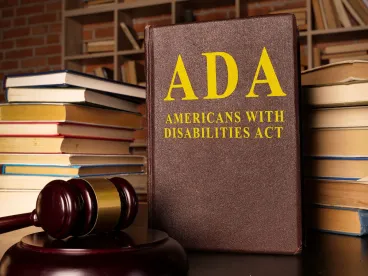On March 18, 2022, the Department of Justice (“DOJ”) issued “Web Accessibility Guidance” for state and local governments and public accommodations under Titles II and III of the Americans with Disabilities Act (“ADA”) (the “Guidance”). The Guidance, however, does not offer any new insights from the DOJ on the issue of website accessibility for state and local governments and public accommodations, and does not provide any specific technical standards for compliance. Instead, as the DOJ explained in the accompanying press release, the Guidance is merely intended to “offer[] plain language and user-friendly explanations to ensure that it can be followed by people without a legal or technical background.”
The Guidance, however, does contain an overview of why web accessibility is important, the obstacles that people with disabilities face with inaccessible websites, and provides some examples of barriers that are commonly encountered by people with disabilities. Examples of website accessibility barriers highlighted by the Guidance include poor color contrast for people with limited vision or color blindness, the use of only color cues for people who are color-blind, the lack of text alternatives (“alt text”) on images for people who are visually impaired, the lack of captions or videos for people with hearing disabilities, inaccessible online forms for people with disabilities who may not be able to fill out, understand, or accurately submit forms, and mouse-only navigation or the lack of keyboard navigation for people with disabilities who cannot use a mouse or trackpad.
With respect to how to make a website ADA compliant, the Guidance provides that “businesses and state and local governments have flexibility in how they comply with the ADA’s general requirements of nondiscrimination and effective communication” and that the DOJ “does not have a regulation setting out detailed standards” for compliance. As such, the Guidance provides that “[b]usinesses and state and local governments can currently choose how they will ensure that the programs, services, and goods they provide online are accessible to people with disabilities.” Finally, the Guidance provides that certain technical standards exist which may provide guidance “concerning how to ensure accessibility of website features,” which include “the Web Content Accessibility Guidelines (WCAG) and the Section 508 Standards, which the federal government uses for its own websites.” The Guidance, however, falls short of providing any specific technical standards for compliance.
Ultimately, since the Guidance does not contain technical standards and does not offer any new insights from the DOJ on website accessibility, the DOJ’s Guidance leaves many questions unanswered – questions that will likely have to be determined through litigation. We will continue monitoring developments in this area and provide updates as new information becomes available.




 />i
/>i

